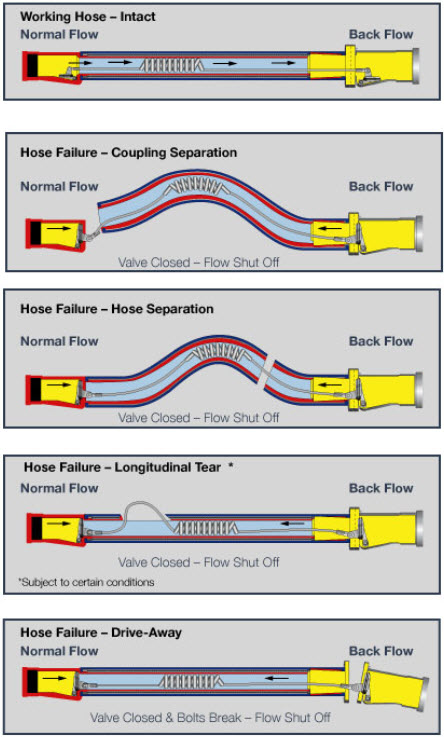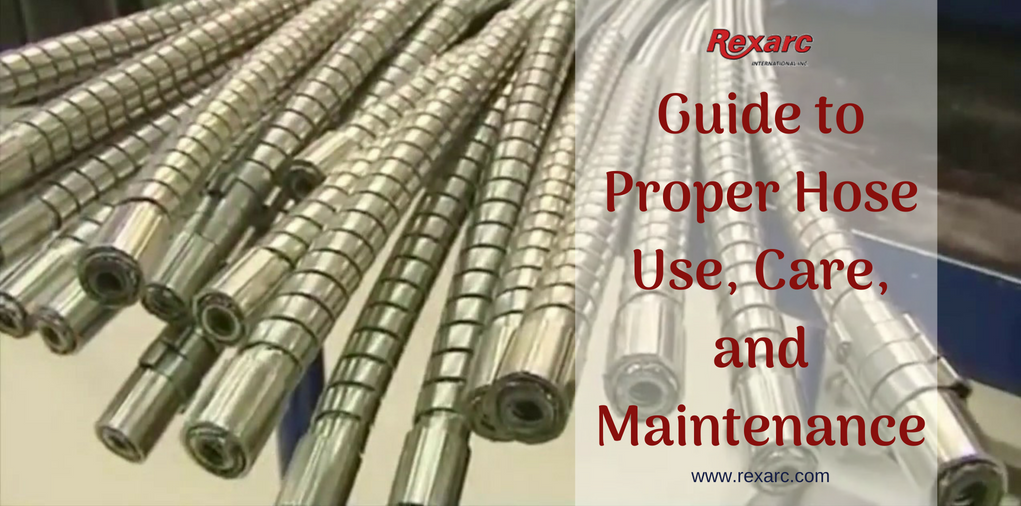Safety hoses are important in industries where liquids and gases get moved. Most times, these hoses are made from sturdy materials, which helps improve their performance in harsh conditions. Do you think the sturdiest construction is enough to ensure its lasting performance? No, it is not enough. When used improperly, these hose assemblies can evoke a safety hazard. Also, they may fail before attaining their full-cycle performance life. Thus, there are several other factors to keep in mind during purchase, storage, operation, and maintenance of hoses. Read this post to understand more about hose care and management.
Marking and Identification Marks to Check before Buying the Safety Hose
A safety hose assembly is designed for a specific use. It is important to check the following markings and identification items before using the hose.
- Size: This is the hose length and nominal inner diameter.
- Ends: This is the type of connection end.
- Intended Application: This describes the use for which the hose is designed. For example, a hose may be used for tank car unloading and loading, or some other purpose.
- Temperature: As the name suggests, this depicts the temperature a hose can withstand.
- Type of Material: It is important to check if the hose selected is capable of withstanding the material to be moved. Always check if there are any limitations mentioned on the hose. For instance, it is important to ensure that the hose is ideal to move the desired chemical. Some examples may include: ammonia, chlorine, LNG, or any other chemical that you wish to move.
- Pressure: It is important to check the greatest or maximum working pressure that a hose can withstand without cracking.
- Delivery: This is the date on which the hose is produced or shipped.
How to Operate the Hoses?
Hose assemblies are often manufactured to exact specifications, and designed for durability. But, the following tips will help you maximize their service lives:
- Ensure that the application follows the maximum pressure limit for the hose. In short, the hose should operate below or at the maximum rated working pressure. If the application demands change in pressure, it should occur slowly. This will help avoid subjecting the hose to excessive surge pressures.
- Develop a foolproof hose inspection plan. Instruct a hose handler to perform a basic visual inspection of a hose before using it. Teach the handler to identify damaged assemblies. In case of severe damages, appropriate steps should be taken to correct them. Before each use, verify no misalignments, cracks, kinks or abrasions are present.
- Keep in mind the smallest bend radius while using the hose. This radius should be maximum bend allowed.
- Test and inspect hose assemblies at least twice a year. This will help ensure their adherence to inspection standards and regulations. These standards include OSHA, RMA, ASTM, LPGA, and NFPA.
- Confirm hose material and chemical compatibility with reference charts. Always confirm that the compatibility complies with the manufacturer’s recommendations.
- Confirm that other parts and couplings used with the hose are manufactured with compatible materials.
- Do not drag hoses over abrasive or sharp surfaces unless they are designed for such applications.
- The hose should not be run over by any equipment.
- Always use dollies for large-sized hoses. However, handling rigs, or slings should be used to support heavy hoses. These accessories are perfect for hoses used in oil discharge and suction services.

Tips for Storing Safety Hoses
Most industrial safety hoses are made from a type of chemical resistant material. Some hoses are also made of rubber, which can be affected by humidity, temperature, oils, solvents, etc. Also, there might be an accumulation of debris or microbes, if these hoses are not cared for properly. As the time passes, these accumulations may be difficult to remove, and start affecting the conveyance of the material. The following tips will help store safety hoses safely.
- The hose should be stored in a dry and clean place, which is free from mildew or dampness.
- If stored in cold extremes, the hose may crack on flexing. Thus, it is important to warm the hose before flexing.
- Protect the rubber hose assemblies from gnawing rodents, as well as boring insects.
- Store the hose in a gentle coil or a long rigid tube to avoid physical damage. If storing in coils, take care to spiral the hose in a larger radius than the bend radius.
- The hose should be stored in a place, where it is not exposed to harsh chemicals, or foreign solids. This will help reduce the regular cleaning and maintenance required before using the hose.
All the above-mentioned tips will help maximize the service life of the hose assemblies. As you already know the important role played by hoses in various industries, so it is important that you purchase them from a reliable brand. Rexarc International, Inc., provides safety hoses, which are used at compressed gas filling stations.





